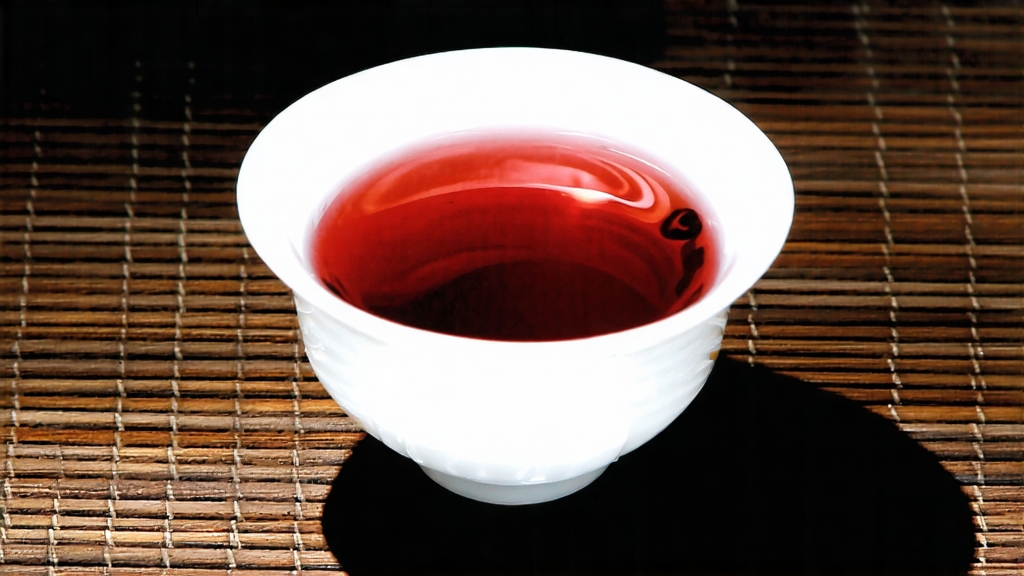
Few names in the vast universe of Chinese tea carry the mystique of Da Hong Pao, literally “Big Red Robe.” Grown on the vertiginous cliffs of northern Fujian’s Wuyi Mountains, this oolong is less a beverage than a living legend—an edible chronicle of imperial taste, scholarly pilgrimage, and geological serendipity. To the international drinker accustomed to the binary of green and black tea, Da Hong Pao offers a third path: a semi-oxidized leaf that smells of minerals, flowers, and smoldering pine, yet finishes like warm honey on the back of the tongue. Understanding it demands a journey through Song-dynasty poetry, Ming-era court records, Qing-era taxation scrolls, and the modern auction houses where 20 g of “mother-tree” leaf once sold for more than 30,000 USD. This article distills that journey into practical knowledge: how the tea was born, how it is still coaxed from nearly vertical rock faces, how a Fujianese tea master judges its “rock rhyme,” and how you—brewing in a Berlin kitchen or a Brooklyn studio—can unlock its nine infusions of evolving aroma.
-
Myth & Documented History
The most quoted origin tale dates to the Ming dynasty. A Ming emperor’s mother fell gravely ill; monks from the Wuyi’s Nine-Dragon Cave presented a tea plucked from four bushes clinging to Tianxin Rock. The empress recovered, the emperor sent crimson silk robes to drape the bushes in gratitude, and the name “Big Red Robe” was sealed. While the story is apocryphal, 1532 stone inscriptions near the “mother trees” confirm imperial tribute status. By 1646 the Qing court had formalized a yearly levy of 1.35 kg, transported to Beijing in sealed bamboo tubes lined with camphor leaves. The 19th century saw the first commercial cultivation of cuttings taken from those original bushes, giving rise to “purebred” or qizhong Da Hong Pao. After 1985, Wuyi scientists micro-propagated the mother trees through tissue culture, creating the now-dominant “wuyi qizhong” line that preserves genetic identity while sparing the 350-year-old originals from over-picking. UNESCO designated the Wuyi range a World Heritage Site in 1999, codifying 2,700 hectares of cliff tea gardens as a cultural landscape. -
Terroir: Why “Rock Rhyme” Matters
Geologically, the Wuyi Mountains are a 100-km arc of weathered volcanic tuff and granite, sliced by the Jiuqu (“Nine-Bend”) Stream. Daytime cliff temperatures can reach 40 °C, while nighttime mist drops to 18 °C, creating a 20-degree diurnal swing that stalls leaf growth and concentrates aromatic precursors. The substrate is so porous that roots penetrate fissures in search of water, absorbing minerals that translate into a tactile sensation Chinese tasters call yanyun—literally “rock rhyme.” It is not a poetic fantasy; gas-chromatography studies show higher levels of geraniol and linalool oxides compared with neighboring valley teas, correlating with the flavor note of wet stone and orchid that persists through multiple infusions. -
Varietal Landscape
Da Hong Pao is both a single cultivar and a blended brand. Purists recognize three tiers:- Mother-Tree: the four surviving bushes at Jiulongke, now retired from plucking; any circulating leaf is either pre-2006 stock or counterfeit.
- Purebred: clonal descendants (wuyi qizhong) grown in the 60-hectare “core scenic” zone, yielding about 2,000 kg per year.
- Blended: a marriage of three or four Wuyi rock cultivars—typically Rou Gui for spice, Shui Xian for body, and Tie Luo Han for sweetness—engineered to mimic the mother-tree profile. Legally, all can be sold as “Da Hong Pao” provided they originate within Wuyishan City’s administrative boundary, a rule that fuels both creativity and confusion.
-
Crafting the Leaf: A 13-Step Choreography
Plucking occurs in late April when three half-opened leaves show 60 % red edge, indicating optimal internal oxidation enzymes. The bushes are too steep for machines, so pickers free-climb with woven